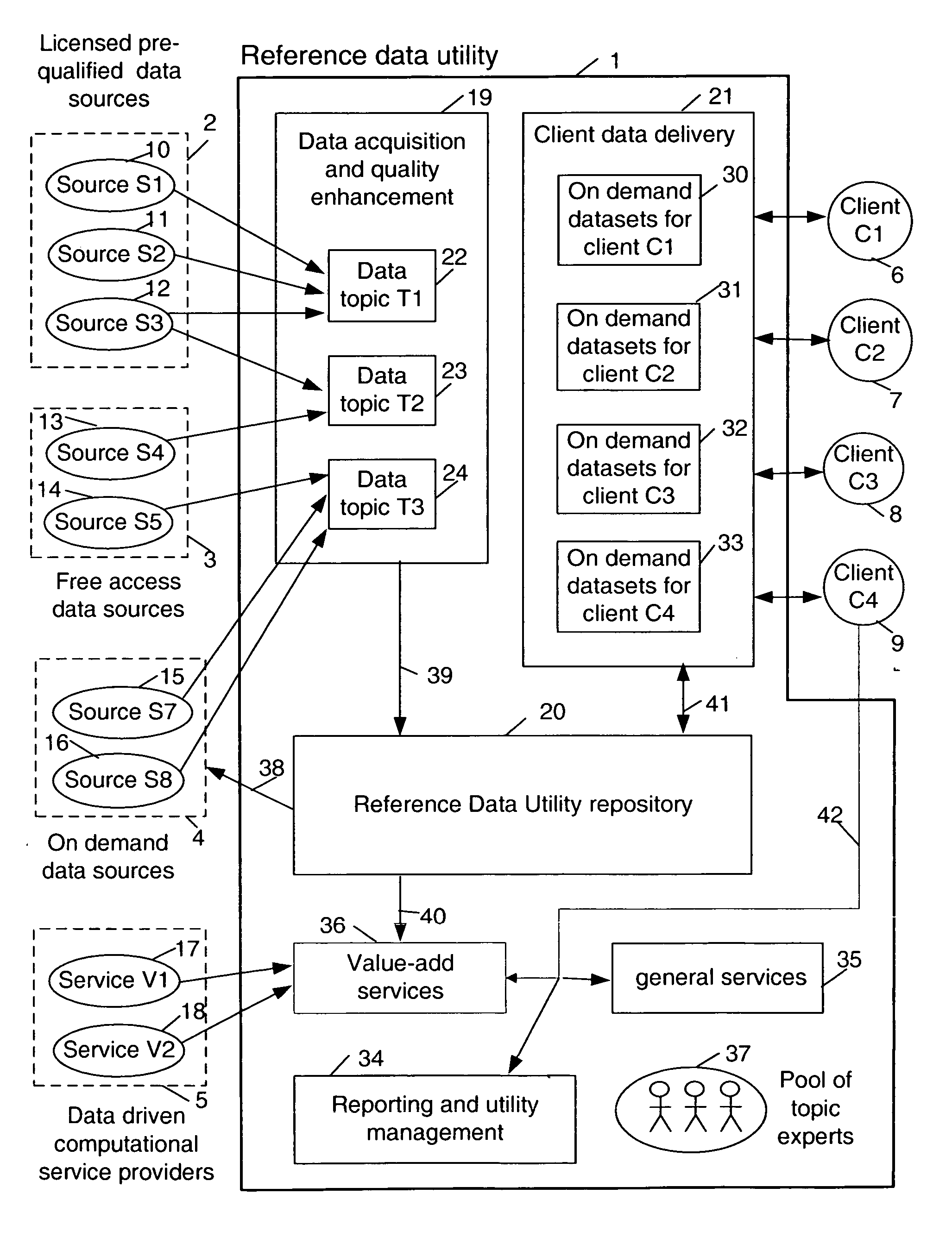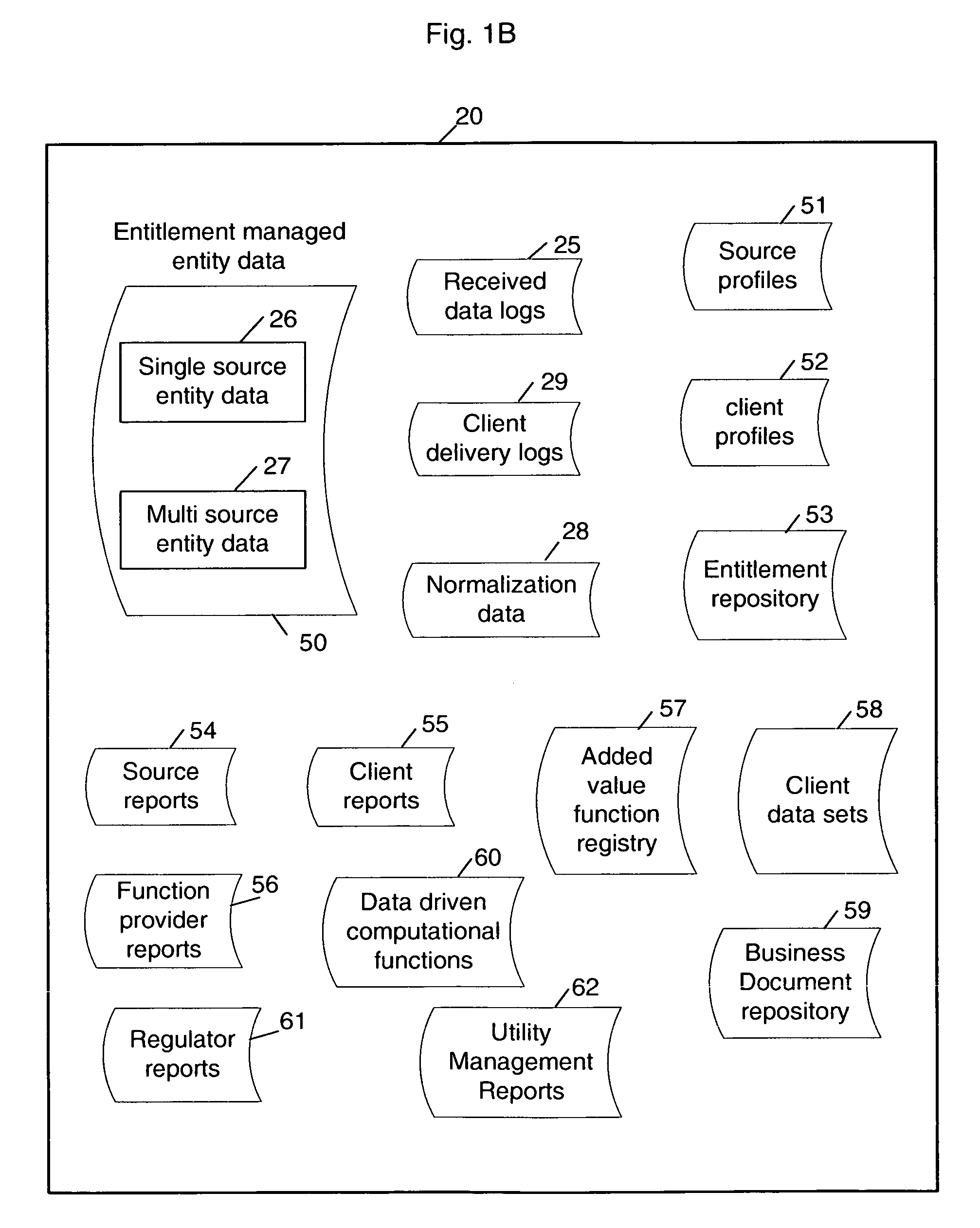Multi-source multi-tenant entitlement enforcing data repository and method of operation
a data repository and multi-tenant technology, applied in the field of data management utility services, can solve the problems of inability to process even the simplest of transactions for clients or internal financial management processes, inability to enforce data repository standards, and inability to meet the needs of organizations with incompatible reference data, etc., to achieve the effect of reducing cost and improving quality
- Summary
- Abstract
- Description
- Claims
- Application Information
AI Technical Summary
Benefits of technology
Problems solved by technology
Method used
Image
Examples
Embodiment Construction
General Organization
[0172] The invention will be described in four sections each addressing a separate aspect. The first section describes the method and operation of a reference data utility with properties that it is outsourceable, shareable, able to support multiple tenants and multiple sources of data and to enforce entitlement and privacy rights to its contained information. Each source may grant entitlements to information derived from its data to any combination of tenants. The information entitled to each tenant depends on the sources used to derive it and the enhancement processes applied to the source data. The section also describes optional additional document choreography and computational services which can be provided by the reference data utility to increase its value to tenants. In an advantageous embodiment a reference data utility includes such value add services.
[0173] The second section describes the structure and methods for forming and operating a repositor...
PUM
 Login to View More
Login to View More Abstract
Description
Claims
Application Information
 Login to View More
Login to View More - R&D
- Intellectual Property
- Life Sciences
- Materials
- Tech Scout
- Unparalleled Data Quality
- Higher Quality Content
- 60% Fewer Hallucinations
Browse by: Latest US Patents, China's latest patents, Technical Efficacy Thesaurus, Application Domain, Technology Topic, Popular Technical Reports.
© 2025 PatSnap. All rights reserved.Legal|Privacy policy|Modern Slavery Act Transparency Statement|Sitemap|About US| Contact US: help@patsnap.com



